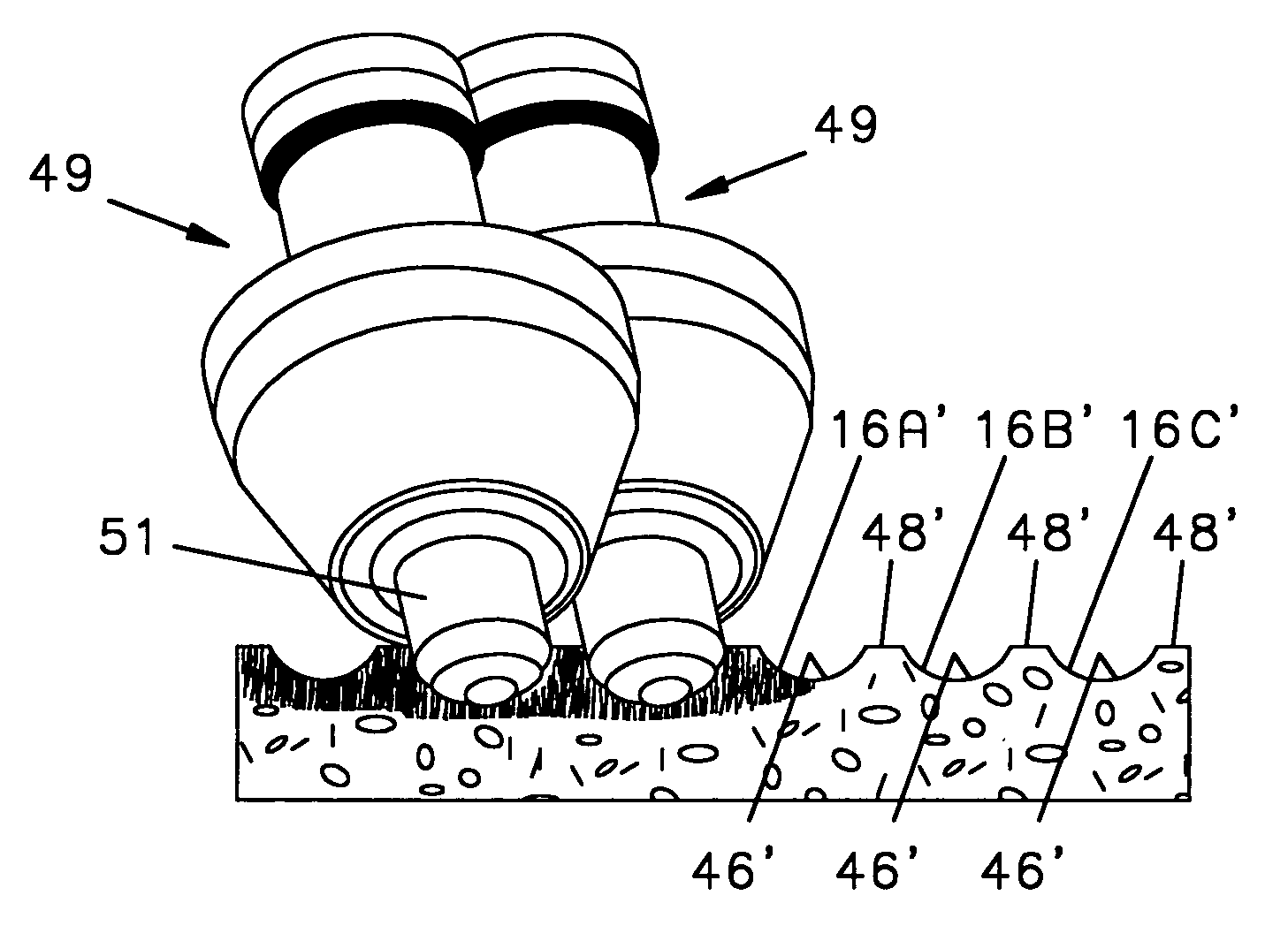Hardened rotary cutting tip
a cutting tip and hardened technology, applied in the field of hardened rotary cutting tips, can solve the problems of increasing the frequency with which tools must be replaced, reducing the useful life of the tool body, and reducing the desirable product of the tool for such machines, so as to facilitate the rotation of the tool and maximize the useful life of the tool
- Summary
- Abstract
- Description
- Claims
- Application Information
AI Technical Summary
Benefits of technology
Problems solved by technology
Method used
Image
Examples
Embodiment Construction
[0054]Referring to FIGS. 1, 2, and 4, a milling machine employs a rotatable drum 10 on which are a plurality of tool mountings for mounting a plurality of cutting tools 12 with the cutting tools 12 positioned in a spiral around the circumference of the drum 10. Each of the tools 12 is mounted to the drum 10 such that the forward cutting end of the tool 12 will cut a groove in the hard surface 18 of the material such as concrete or asphalt. By mounting the tools 12 in a spiral around the circumference of the drum 10, the cutting ends of the various tools 12 are positioned to form a plurality of adjacent grooves 16A, 16B, 16C as the drum 10 rotates adjacent the hard surface 18.
[0055]Each of the tools 12 is mounted on the drum 10 to engage the hard surface 18 at an up angle of approximately 45 degrees and a side angle of seven degrees. The tools 12 are also retained in holders 11 on the drum 10 so as to be rotatable about the longitudinal axis 19 of the tool 12 such that the tool 12 we...
PUM
| Property | Measurement | Unit |
|---|---|---|
| Fraction | aaaaa | aaaaa |
| Angle | aaaaa | aaaaa |
| Diameter | aaaaa | aaaaa |
Abstract
Description
Claims
Application Information
 Login to View More
Login to View More - R&D
- Intellectual Property
- Life Sciences
- Materials
- Tech Scout
- Unparalleled Data Quality
- Higher Quality Content
- 60% Fewer Hallucinations
Browse by: Latest US Patents, China's latest patents, Technical Efficacy Thesaurus, Application Domain, Technology Topic, Popular Technical Reports.
© 2025 PatSnap. All rights reserved.Legal|Privacy policy|Modern Slavery Act Transparency Statement|Sitemap|About US| Contact US: help@patsnap.com



